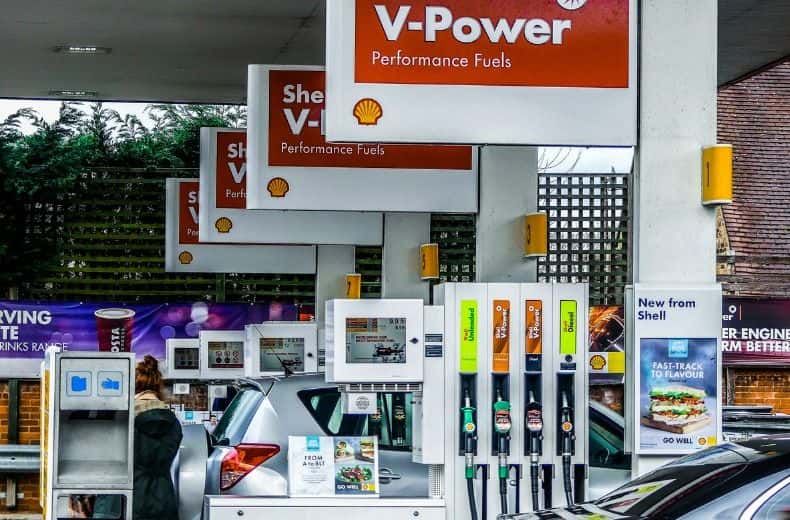According to latest RAC Fuel Watch data, wholesale unleaded prices tumbled by 4.62p to 82.26p through October due to the falling oil price – and discounts should follow on the forecourts.
Pump prices remained virtually the same during October, but on Wednesday November 5, Asda cut its petrol price by 2p per litre (charging no more than 108.7p) and 3p on diesel (no more than 111.7p), with other retailers likely to follow.
RAC fuel spokesman Simon Williams said: “It’s likely to be a case of déjà-vu for drivers this month as once again fuel prices are starting to fall just at the point when we’re all driving less as a result of a coronavirus lockdown.”
While prices are unlikely to fall to March levels, which dropped below £1 a litre, “any driver needing to fill up later in November should be greeted by the sight of lower prices, if retailers do the right thing,” Mr Williams said.
Fuel Watch data suggests retailers have been overcharging motorists for almost two months now, as diesel prices at the pumps remained significantly higher than petrol despite cheaper wholesale costs, between the middle of August and the middle of October.
Mr Williams said: “Diesel drivers have reason to feel particularly hard done by, as arguably they have been paying over the odds for the fuel for two whole months now. We strongly urge retailers to lower the price of diesel, both for businesses and the country’s 12m-plus diesel car drivers.”
The cost of filling up a 55-litre family car with petrol at a supermarket is now £2.65 less than the UK average (£60.29 per tank, compared to £62.94), and £2.24 less to fill with diesel (£62.56 per tank, compared to £64.80).
| Unleaded | 01/10/2020 | 29/10/2020 | Change |
| UK average | 114.53 | 114.43 | -0.10 |
| East | 114.85 | 114.66 | -0.19 |
| East Midlands | 114.39 | 114.39 | 0.00 |
| London | 115.84 | 115.38 | -0.46 |
| North East | 113.17 | 112.97 | -0.20 |
| North West | 114.29 | 114.23 | -0.06 |
| Northern Ireland | 111.56 | 111.31 | -0.25 |
| Scotland | 114.15 | 114.37 | 0.22 |
| South East | 115.46 | 115.26 | -0.20 |
| South West | 114.40 | 114.24 | -0.16 |
| Wales | 113.57 | 113.50 | -0.07 |
| West Midlands | 114.42 | 114.35 | -0.07 |
| Yorkshire and the Humber | 113.96 | 113.89 | -0.07 |
| Diesel | 01/10/2020 | 29/10/2020 | Change |
| UK average | 118.09 | 117.82 | -0.27 |
| East | 119.03 | 118.80 | -0.23 |
| East Midlands | 118.01 | 117.78 | -0.23 |
| London | 118.91 | 118.50 | -0.41 |
| North East | 116.88 | 116.54 | -0.34 |
| North West | 117.70 | 117.58 | -0.12 |
| Northern Ireland | 114.25 | 114.13 | -0.12 |
| Scotland | 117.73 | 117.61 | -0.12 |
| South East | 119.54 | 119.12 | -0.42 |
| South West | 118.01 | 117.69 | -0.32 |
| Wales | 117.45 | 117.17 | -0.28 |
| West Midlands | 118.06 | 117.76 | -0.30 |
| Yorkshire and The Humber | 117.36 | 117.07 | -0.29 |
Although the roads aren’t expected to be as quiet during the second national lockdown, fuel sales should fall in the coming weeks.
“We’re concerned some retailers may choose to only cut by a few pence, or not at all, which would be bad news for drivers,” Williams added.
“There is perhaps a cruel irony for motorists here in that the route to cheaper prices is cheaper oil, yet the main reason the oil price is lower is because so many of us across the world aren’t travelling.”
- How to save money as a driver – 30 tips
- How to save fuel – the ultimate guide
- Does fuel go off? Old fuel and fuel storage questions answered

RAC sale – up to 33% off*
• Roadside cover from £5.29 a month†
• We get to most breakdowns in 60 mins or less
• Our patrols fix 4/5 breakdowns on the spot











